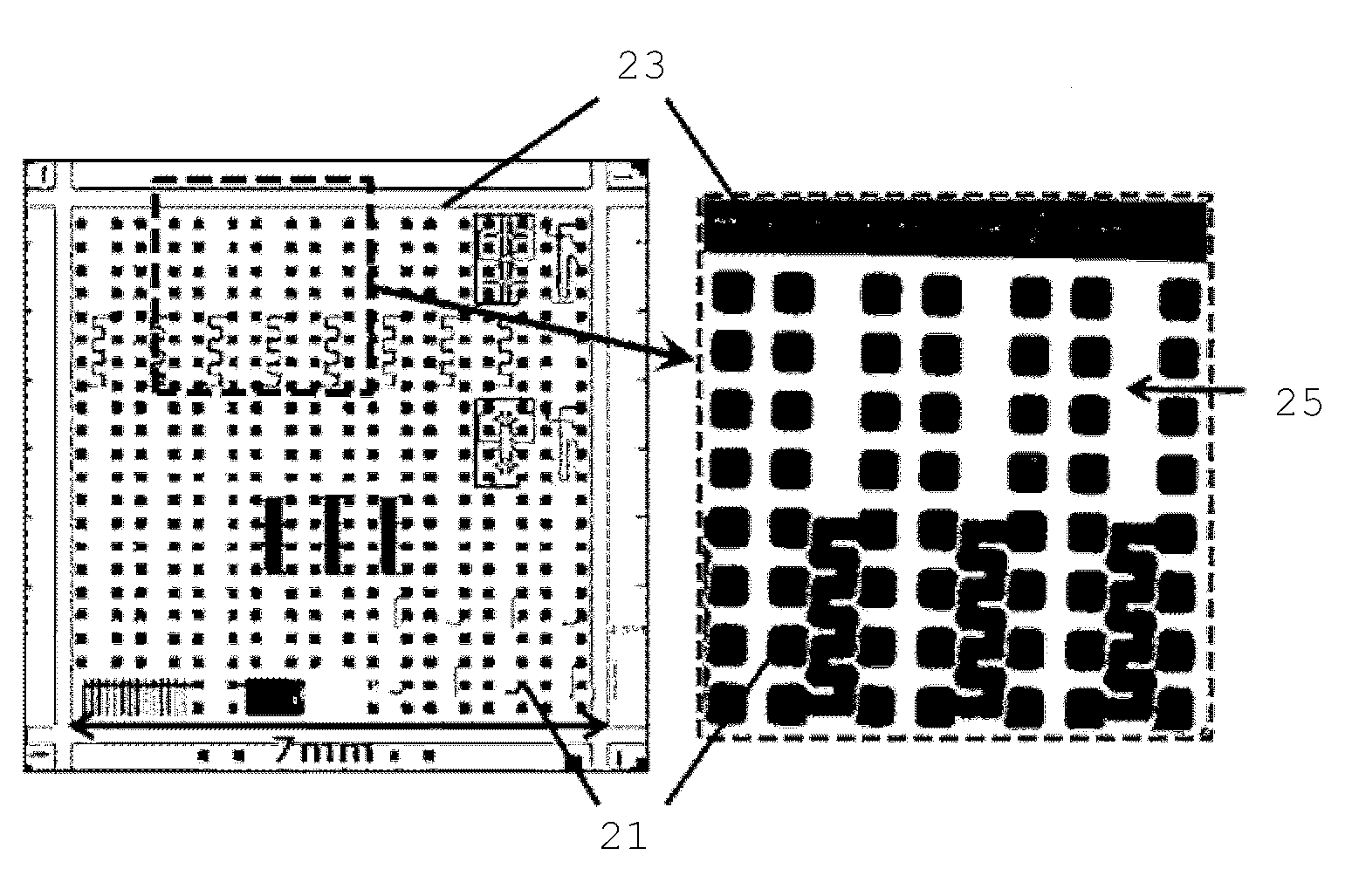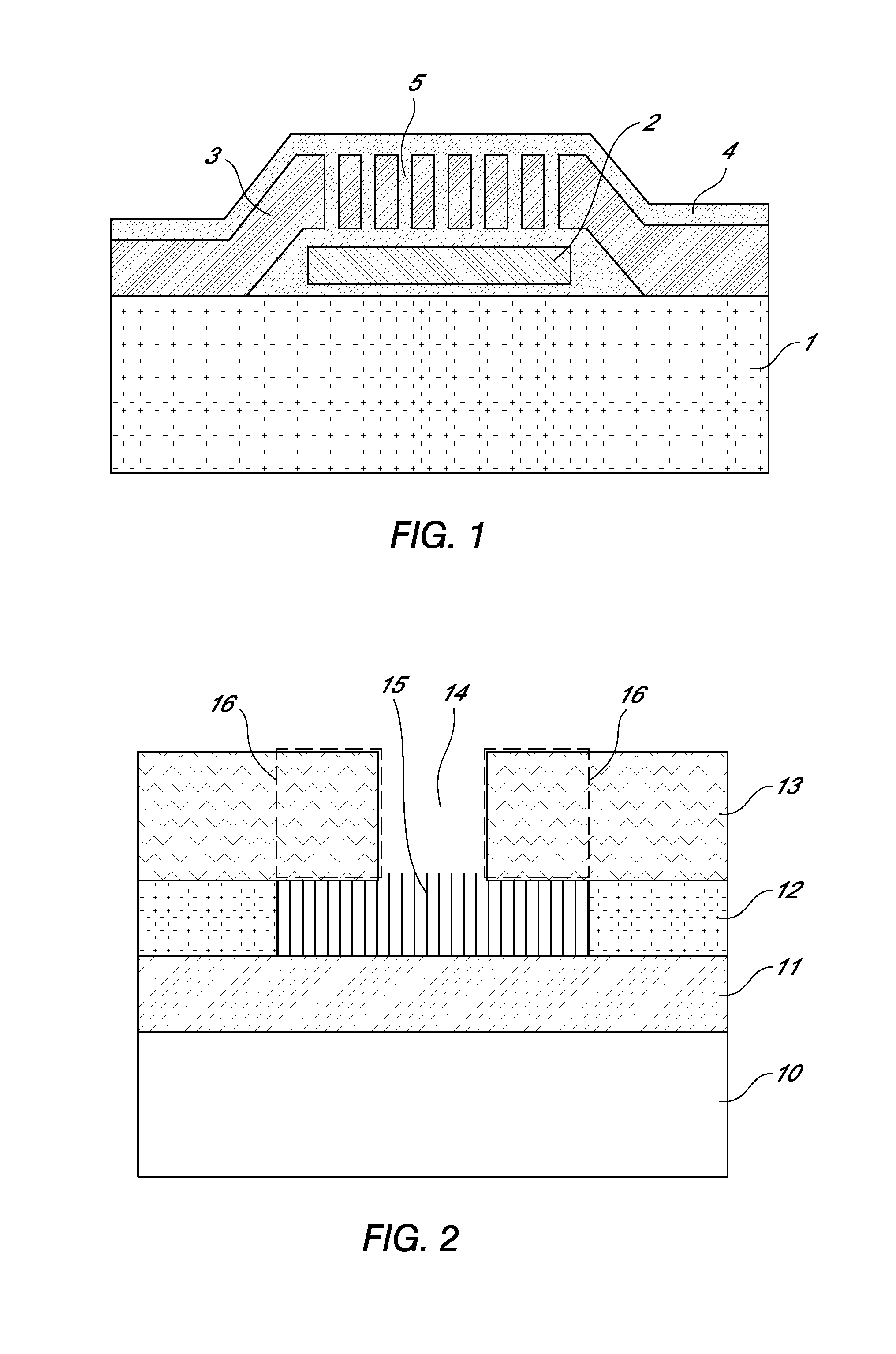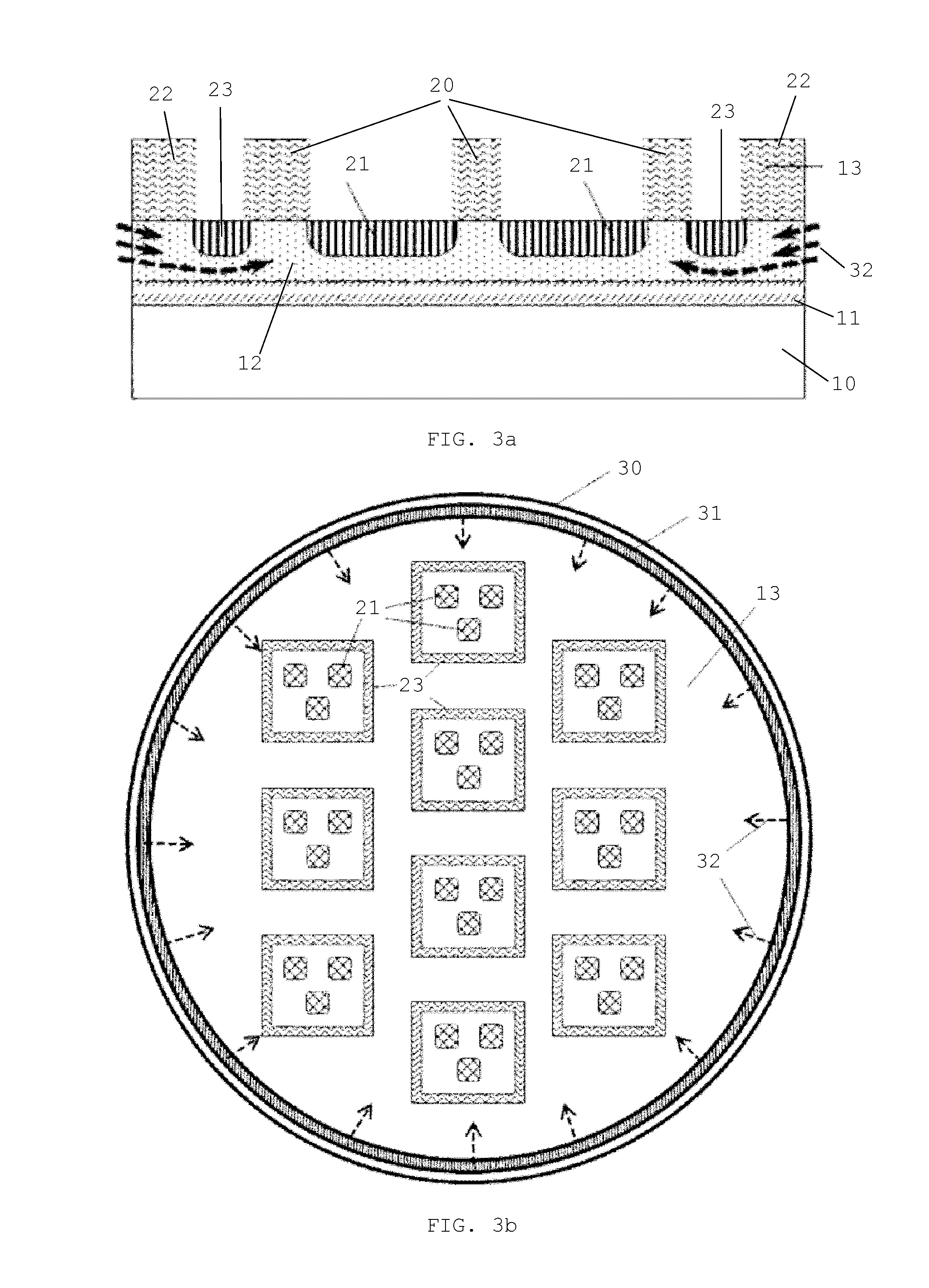Method for precisely controlled masked anodization
a technology of masking and anodization, which is applied in the direction of coatings, surface reaction electrolytic coatings, electrolytic coatings, etc., can solve the problem of self-limitation of the anodization process, and achieve the effect of improving and cost-efficien
- Summary
- Abstract
- Description
- Claims
- Application Information
AI Technical Summary
Benefits of technology
Problems solved by technology
Method used
Image
Examples
examples
[0103]By way of illustration, preferred embodiments not being limited thereto, a number of further particular examples are discussed below, illustrating features and advantages of preferred embodiments.
[0104]In a first particular example, anodization of a 1 μm-thick Al layer (deposited by sputtering on top of a silicon oxide layer on 200 mm Si wafer) has been performed using a photoresist mask not including the border line structure resulting in a large unwanted extension of the anodization region width from 160 μm up to 800 μm as shown in FIG. 2. The anodization process is performed in a Teflon-based chamber housing a sulfuric acid-based electrolyte. The anodization temperature and voltage used here are within the range of 20-30° C. and 10-20V respectively. By performing the same anodization process of an Al layer using a photoresist mask defining a border line 23 (ring) surrounding a plurality of other structures 21 as shown in FIG. 6, the anodization region width has been well co...
PUM
| Property | Measurement | Unit |
|---|---|---|
| Temperature | aaaaa | aaaaa |
| Temperature | aaaaa | aaaaa |
| Electric potential / voltage | aaaaa | aaaaa |
Abstract
Description
Claims
Application Information
 Login to View More
Login to View More - R&D
- Intellectual Property
- Life Sciences
- Materials
- Tech Scout
- Unparalleled Data Quality
- Higher Quality Content
- 60% Fewer Hallucinations
Browse by: Latest US Patents, China's latest patents, Technical Efficacy Thesaurus, Application Domain, Technology Topic, Popular Technical Reports.
© 2025 PatSnap. All rights reserved.Legal|Privacy policy|Modern Slavery Act Transparency Statement|Sitemap|About US| Contact US: help@patsnap.com



